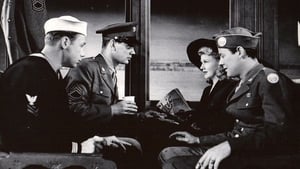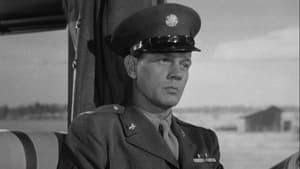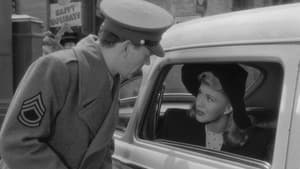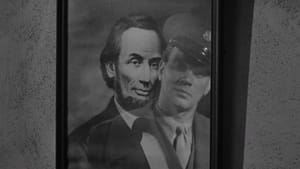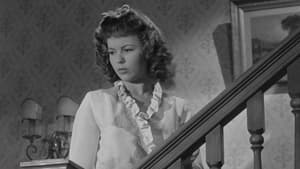Contact: info@alwanfilm.com
Video Sources 0 Views
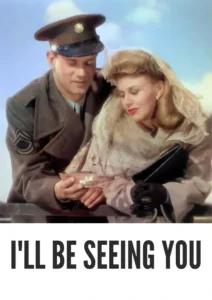
Synopsis
I’ll Be Seeing You 1944 Colorized Review: A Tender Romance from the WWII Era

Introduction
“I’ll Be Seeing You” (1944) is a poignant romance set against the backdrop of World War II, offering a tender and heartfelt narrative that captures the emotional complexities of wartime relationships. Directed by William Dieterle and featuring standout performances by Joseph Cotten and Ginger Rogers, this film is a shining example of how Hollywood addressed contemporary issues through the lens of romance and drama during the war years.
In this article, we will explore the impact of “I’ll Be Seeing You” on its audience and its place in film history, discussing the significance of its wartime context, the craftsmanship of its performances, and its overall contribution to the genre of romantic drama.
Check The Full Colorized Movies List
Check Our Colorized Movies Trailer Channel
Understanding I’ll Be Seeing You 1944 Colorized: Director, Cast, and Genre
“I’ll Be Seeing You” was directed by William Dieterle, a filmmaker known for his diverse work ranging from historical dramas to romantic comedies. Dieterle’s direction in this film is marked by a delicate balance of sentiment and realism, capturing the intimate moments of the story while also acknowledging the broader societal pressures of the time.
The film stars Joseph Cotten as Sergeant Tom Ransome, a war-weary soldier on leave, and Ginger Rogers as Mary Marshall, a young woman with her own set of personal struggles. Cotten, known for his versatility and depth, delivers a nuanced performance as a man struggling with his past and present, while Rogers brings warmth and grace to her role, blending vulnerability with resilience.
The genre of “I’ll Be Seeing You” is primarily romantic drama, but it also touches on themes of war and personal redemption. It stands out for its portrayal of the emotional toll of World War II on individuals, reflecting the era’s anxieties and hopes through a personal and romantic lens. The film blends romance with social commentary, offering a nuanced look at how the war affects personal relationships and individual psyches.
Exploring the World of I’ll Be Seeing You 1944 Colorized: Plot and Characters
The plot of “I’ll Be Seeing You” centers on the chance meeting between Sergeant Tom Ransome and Mary Marshall during a Christmas leave. Tom, who is recovering from the psychological scars of combat, encounters Mary, who is struggling with her own hardships, including the recent loss of her fiancé and her role as the primary caregiver for her ailing mother.
The film’s central narrative revolves around the developing romance between Tom and Mary, who find solace and understanding in each other’s company. Their relationship unfolds against the backdrop of wartime uncertainties, with both characters grappling with their personal demons and the looming specter of war.
Key moments in the film include their heartfelt conversations, tender moments of connection, and the inevitable conflicts that arise from their pasts and present circumstances. Tom’s struggle with PTSD and Mary’s emotional turmoil create a complex emotional landscape, making their journey toward healing and understanding all the more compelling.
The supporting cast includes Shirley Temple as Mary’s young niece, adding a touch of innocence and joy to the film. Temple’s presence helps to balance the heavier themes with moments of lightness and hope, underscoring the film’s overall emotional depth.
The Art of Film Craftsmanship
The craftsmanship of “I’ll Be Seeing You” is evident in its careful direction, evocative cinematography, and heartfelt performances. William Dieterle’s direction ensures that the film maintains a steady emotional tone, allowing the characters’ internal struggles and their budding romance to take center stage.
Cinematography plays a crucial role in conveying the film’s mood and atmosphere. The use of lighting and camera angles enhances the emotional impact of the scenes, highlighting the characters’ vulnerability and the intimate moments of their relationship. The film’s score, composed by Victor Young, further complements the narrative, with its evocative melodies capturing the essence of the characters’ emotions and the wartime setting.
Early Romantic Dramas: A Brief History
Romantic dramas have long been a staple of cinema, offering audiences an escape into tales of love and heartbreak. The genre experienced significant evolution during the 1940s, with films like “I’ll Be Seeing You” reflecting the unique challenges of the wartime era. This period saw an emphasis on personal stories set against the larger backdrop of global conflict, capturing the emotional struggles of individuals separated by war.
Early romantic dramas often focused on the tension between personal desires and the harsh realities of the world, reflecting the societal concerns of the time. Films like “I’ll Be Seeing You” addressed themes of separation, loss, and the search for connection, resonating with audiences who were living through the turmoil of World War II.
I’ll Be Seeing You 1944 Colorized and Its Wartime Context
“I’ll Be Seeing You” holds a special place in the context of World War II cinema. The film’s release in 1944 coincided with a period of heightened wartime anxiety and sacrifice, making its exploration of love and personal struggles particularly resonant. The characters’ experiences reflect the broader societal concerns of the time, including the psychological impact of war and the challenges of maintaining relationships in the face of global conflict.
The film’s portrayal of Tom’s psychological struggles and Mary’s emotional hardships provides a window into the human side of wartime experiences. By focusing on the personal rather than the political or military aspects of the war, “I’ll Be Seeing You” offers a poignant and relatable depiction of the emotional toll of conflict.
The Debate Over Wartime Romance Films
Wartime romance films like “I’ll Be Seeing You” have often been the subject of debate, with some viewing them as idealistic escapism and others appreciating their emotional depth and social commentary. Critics of the genre argue that such films can oversimplify or romanticize the experiences of those affected by war, presenting an idealized version of love and resilience.
Proponents, however, argue that these films offer valuable insights into the human experience, highlighting the ways in which individuals cope with and find solace in each other during difficult times. “I’ll Be Seeing You” is an example of how wartime romance films can provide a nuanced and empathetic portrayal of personal struggles, offering both comfort and understanding to audiences.
Examining I’ll Be Seeing You 1944 Colorized as a Wartime Romance
As a wartime romance, “I’ll Be Seeing You” navigates the delicate balance between romance and realism. The film’s portrayal of Tom and Mary’s relationship offers a touching exploration of love amidst adversity, capturing the ways in which personal connections can provide solace and hope during challenging times.
The film’s depiction of Tom’s PTSD and Mary’s emotional challenges adds depth to their romance, making it more than just a love story. The characters’ struggles and growth reflect the broader experiences of individuals living through the war, providing a relatable and empathetic portrayal of the emotional impact of conflict.
Influence and Legacy: I’ll Be Seeing You 1944 Colorized’s Impact on Cinema
“I’ll Be Seeing You” has had a lasting impact on the romantic drama genre, particularly in its portrayal of wartime relationships. The film’s sensitive handling of psychological and emotional issues influenced subsequent films that sought to address similar themes. Its focus on personal struggles and romantic connections in the context of global conflict set a precedent for future films exploring the intersection of love and adversity.
The film’s success also contributed to the continued popularity of Joseph Cotten and Ginger Rogers as leading actors, showcasing their ability to tackle complex emotional roles. Their performances in “I’ll Be Seeing You” remain a testament to their talent and versatility, further cementing their places in cinematic history.
Director’s Cinematic Legacy: Beyond I’ll Be Seeing You 1944 Colorized
William Dieterle’s directorial career is marked by a wide range of films, from historical dramas to romantic comedies. His work on “I’ll Be Seeing You” highlights his ability to blend sentiment with realism, capturing the emotional depth of his characters while addressing the broader societal context of the wartime era.
Dieterle’s legacy extends beyond “I’ll Be Seeing You,” with notable films such as “The Story of Louis Pasteur” (1936) and “The Hunchback of Notre Dame” (1939) showcasing his diverse talents and contributions to cinema. His ability to handle both dramatic and romantic narratives with sensitivity and skill continues to be appreciated by audiences and critics alike.
Themes Explored in I’ll Be Seeing You 1944 Colorized
“I’ll Be Seeing You” delves into several themes that resonate with audiences even today. The film explores the impact of war on personal relationships, highlighting the emotional and psychological toll of conflict. Themes of love, loss, and resilience are central to the narrative, reflecting the broader experiences of individuals living through wartime.
The film also touches on themes of redemption and healing, as Tom and Mary navigate their personal struggles and find solace in each other’s company. Their journey toward understanding and connection underscores the film’s message of hope and resilience, offering a hopeful perspective amidst the challenges of war.
Reception and Controversy Surrounding I’ll Be Seeing You 1944 Colorized
Upon its release, “I’ll Be Seeing You” was well-received by audiences and critics, praised for its emotional depth and the performances of Cotten and Rogers. The film’s sensitive portrayal of wartime relationships resonated with viewers, offering a heartfelt and relatable depiction of love and struggle during the war.
However, like many wartime films, “I’ll Be Seeing You” faced some criticism for its idealized portrayal of romance and its focus on personal rather than political issues. Critics argued that the film’s romanticized depiction of war could overshadow the more complex and challenging aspects of the conflict.
Where to Watch I’ll Be Seeing You 1944 Colorized Online
“I’ll Be Seeing You” is available on several streaming platforms and DVD collections, allowing both new viewers and longtime fans to experience this classic film. Platforms such as Amazon Prime, TCM (Turner Classic Movies), and various DVD/Blu-ray retailers offer the film in its original format, preserving the timeless quality of its storytelling and performances.
FAQs About I’ll Be Seeing You 1944 Colorized
Q: Is “I’ll Be Seeing You” based on a true story?
A: The film is a work of fiction, though it reflects the emotional realities of wartime experiences and relationships.
Q: Who composed the music for “I’ll Be Seeing You”?
A: The film’s score was composed by Victor Young, known for his evocative and memorable musical contributions to cinema.
Q: Was the film a commercial success?
A: Yes, “I’ll Be Seeing You” was well-received by audiences and critics, praised for its performances and emotional depth.
Conclusion
“I’ll Be Seeing You” (1944) remains a touching and impactful film that captures the complexities of love and personal struggle during wartime. With its heartfelt performances, sensitive direction, and poignant narrative, the film continues to resonate with audiences, offering a valuable perspective on the emotional toll of World War II.
For those interested in classic romantic dramas, “I’ll Be Seeing You” is a must-watch, showcasing the talents of Joseph Cotten and Ginger Rogers and reflecting the era’s unique challenges and hopes. Whether revisiting the film or discovering it for the first time, viewers are sure to be moved by its tender portrayal of romance amidst adversity.

